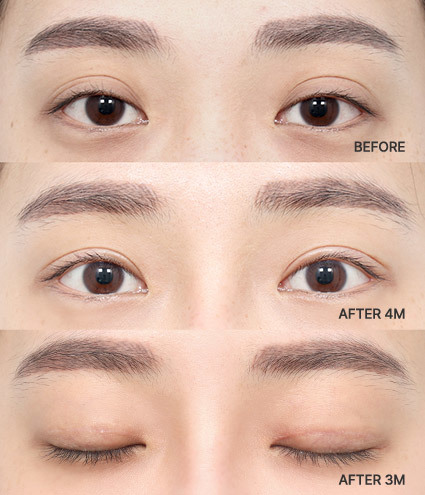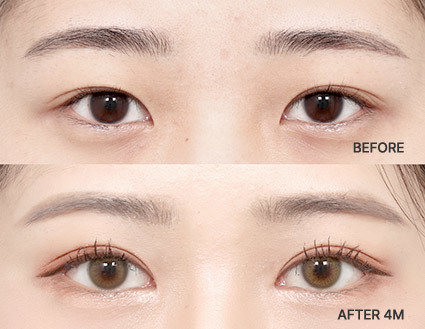How to Decide Whether You Need Revisional Eyelid Surgery
Table of Contents
1. Understanding Revisional Eyelid Surgery
2. Things to Do Once You've Decided to Undergo Revisional Eyelid Surgery
3. How to Prepare for Revisional Eyelid Surgery
4. The Recovery Period for Revisional Eyelid Surgery
5. How to Take Care of Your Eyes After Revisional Eyelid Surgery

Blepharoplasty, commonly known as eyelid surgery, is a procedure designed to rejuvenate the eye area, addressing issues like sagging skin, under-eye bags, and droopy eyelids that contribute to a tired or aged appearance. While many patients are satisfied with their blepharoplasty results, some find themselves contemplating a second surgery, known as revisional eyelid surgery or revision blepharoplasty, to refine or correct the outcomes of the initial procedure.
Understanding Revisional Eyelid Surgery
Revision blepharoplasty is a complex surgery that requires a surgeon to correct or improve upon the results of a previous eyelid surgery. It’s a testament to the precision and challenges of cosmetic eyelid surgery, where even millimeters matter, and the balance between form and function is delicate. This procedure can address both aesthetic concerns and functional impairments, providing a crucial option for patients who are dissatisfied with their initial surgery's results.
Why Consider Revisional Eyelid Surgery?

Revisional eyelid surgery, or secondary eyelid surgery, is often considered for various reasons, each stemming from the outcomes or long-term effects of an initial eyelid procedure. Here’s a list of common reasons why AB’s patients opt for revisional eyelid surgery:
-
Unsatisfactory Cosmetic Results: The primary motivation for many seeking revision is dissatisfaction with the aesthetic outcome of the first surgery. This can include issues like asymmetry between the eyes, insufficient removal of skin or fat leading to persistent droopiness or puffiness, or overcorrection that results in an unnatural appearance.
-
Functional Problems: Some patients experience functional issues after their initial blepharoplasty, such as difficulties with fully closing their eyes. This can lead to symptoms like dry eyes, increased risk of eye infections, and discomfort, all of which might necessitate corrective surgery.
-
Scarring: Excessive or poorly placed scars from the initial procedure can lead to both aesthetic concerns and functional impairments. Revision surgery can be aimed at improving the appearance of scars and, in some cases, restoring eyelid function.
-
Changes Due to Aging: The aging process continues despite surgical interventions. Over time, changes in skin elasticity and facial structures may alter the results of the initial blepharoplasty, prompting some to seek revision surgery to address these new concerns.
-
Complications from Previous Surgery: Complications such as infection, bleeding, or incorrect healing can affect the outcome of the initial surgery. In some cases, these complications may require revision surgery to correct.
-
Incomplete Removal or Excessive Removal of Skin or Fat: If too little skin or fat was removed during the initial surgery, the desired aesthetic effect might not be achieved. Conversely, if too much was removed, it can lead to a hollow or stretched appearance. Revision surgery aims to balance these proportions for a more natural look.
-
Development of Ptosis: Ptosis (drooping of the upper eyelid) can occur or persist after the initial surgery. If the ptosis significantly affects vision or aesthetics, revision surgery may be necessary to correct the eyelid position.
-
Desire for Further Refinement: Some patients may be generally satisfied with the outcome of their initial surgery but desire further refinement or adjustment to achieve their ideal aesthetic goal.
-
Correction of Lower Eyelid Malposition: Issues such as ectropion (outward turning of the eyelid) or entropion (inward turning of the eyelid) can occur after blepharoplasty, leading to discomfort and eye problems. Revision surgery can correct these positions.
-
Improving Symmetry: Achieving perfect symmetry is challenging, and minor asymmetries can become apparent after the initial surgery has healed. Revisional eyelid surgery can be performed to improve symmetry between the two eyes.
Each case for revision of blepharoplasty is unique, and the decision to undergo a second surgery should be made after careful consultation with a qualified and experienced plastic surgeon who specializes in eyelid surgeries. This ensures that patients have a clear understanding of the potential benefits, risks, and outcomes of revisional eyelid surgery.
Things to Do Once You've Decided to Undergo Revisional Eyelid Surgery

Deciding to undergo revisional eyelid surgery is significant and should be approached with careful consideration. The following sections offer guidance from AB surgeons on navigating this decision-making process.
Consultation with a Specialist
A consultation with a plastic surgeon who has specific experience in revisional eyelid surgery is critical. Such a specialist can offer an expert assessment of whether revision surgery can effectively address your concerns and discuss the potential outcomes and associated risks.
Consider the Timing
Proper timing is crucial when considering revisional eyelid surgery. Healing from the initial surgery takes time, and the final results may not be fully apparent for several months. Patients are advised to wait until they have completely healed before contemplating a second surgery to avoid intervening prematurely and potentially compromising the outcomes.
Understand the Risks
Like any surgical procedure, revisional eyelid surgery carries inherent risks. These can include reactions to anesthesia, infection, bleeding, and the possibility of further dissatisfaction with the results. A thorough discussion with your surgeon about these risks is essential to making an informed decision.
Align Your Expectations
It’s important to have a clear and realistic understanding of what revisional eyelid surgery can achieve. While the procedure can make significant improvements, it has its limitations. Setting realistic expectations and understanding the scope of what is achievable with revision surgery is key to satisfaction with the results.
How to Prepare for Revisional Eyelid Surgery
Once the decision to proceed with revisional eyelid surgery has been made, preparation is the next critical step. This preparation involves physical readiness, mental preparedness, and logistical planning.
Physical Preparation
Optimizing your physical health before surgery can enhance your recovery and outcomes. This might include following a healthy diet, quitting smoking, and avoiding medications or supplements that can increase bleeding risk.
Mental Preparedness
Mentally preparing for revision surgery is just as important as physical preparation. Understanding the recovery process, managing expectations, and preparing for the emotional ups and downs that can accompany the journey toward recovery are crucial aspects of mental preparedness. Emotional support from family, friends, or a professional can be invaluable during this time.
Logistical Planning
Logistical preparation involves organizing your life to accommodate the surgery and recovery period. This might include arranging for time off work, securing help with daily tasks, and setting up a comfortable recovery area in your home. Ensuring you have easy access to necessary supplies, such as ice packs, clean gauze, and prescribed medications, will make the recovery process smoother and more comfortable.
The Recovery Period for Revisional Eyelid Surgery
The recovery period for revisional eyelid surgery can vary depending on the extent of the surgery, the individual's healing process, and whether any complications arise. However, a general timeline can be outlined:
-
First 48 Hours: Swelling and bruising are most pronounced during the first 48 hours. Patients are advised to rest with their head elevated and apply cold compresses to reduce swelling.
-
First Week: Patients typically experience the peak of their swelling and bruising during the first few days, gradually improving over the week. Stitches are usually removed or start to dissolve within 5 to 7 days after surgery.
-
1 to 2 Weeks: By the end of the second week, most noticeable swelling and bruising should have significantly decreased. Many patients feel comfortable returning to social activities and work, provided they do not engage in strenuous activities. However, minor swelling and discoloration may persist.
-
3 to 4 Weeks: Most patients are well into the healing process, with much of the bruising and swelling resolved. It’s still important to protect the eyes from sun exposure and avoid any activities that could strain the eyes.
How to Take Care of Your Eyes After Revisional Eyelid Surgery
Revisional eyelid surgery can offer long-lasting results, but it’s essential to maintain a healthy lifestyle and proper skincare regimen to preserve these outcomes. Understanding that the aging process will continue and may eventually alter the results is also important for setting long-term expectations.
The Role of Skincare is Huge
A good skincare routine, including the use of sunscreen and moisturizers, can help maintain the health and appearance of the skin around the eyes. Your surgeon can recommend products that will support your healing and long-term results.
Future Aging and Maintenance
While revisional eyelid surgery can significantly enhance the eye area's appearance, it does not halt the aging process. Future changes in skin elasticity and facial volume will occur, and maintaining a realistic perspective on these changes is important. Some patients may choose non-surgical treatments, such as fillers or laser therapy, for maintenance.

Deciding to undergo revisional eyelid surgery is a deeply personal choice that requires careful consideration of various factors, including the reasons for dissatisfaction with the initial surgery, the potential benefits and risks of revision, and the emotional and physical readiness for another surgical procedure. By thoroughly researching, consulting with experienced professionals, and preparing for the journey, patients can make informed decisions that align with their goals and expectations.
Revisionsal eyelid surgery presents a chance to rectify any aesthetic or functional concerns left from your initial surgery, paving the way for more gratifying results. The key to success in this endeavor is a partnership rooted in open communication and mutual understanding between you and your surgeon.
At AB Plastic Surgery, our top-tier surgeons are committed to aligning with your preferences, desired outcomes, and the specific conditions of your eyes to ensure satisfaction. We invite you to schedule a consultation, available both online and in-person, at your earliest convenience.





